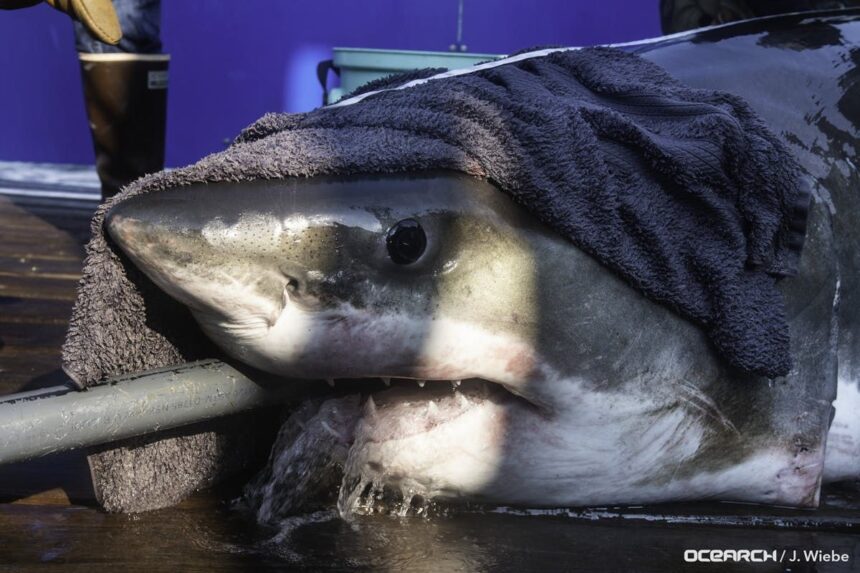Article contentThe director of the Great White North Invasion, filmed off the coast of Lunenburg last October, reported that roughly 250 white sharks had been tagged in those waters. Article contentWhat is luring them? Article contentA culmination of factors seems to be behind the upsurge. Article contentFor one thing, there are just more white sharks around now that they have been declared an endangered species by the Canadian government and are subject to a wider range of protections in the North Atlantic. Article contentIncreasingly, those big hungry fish are headed this way. Article contentClimate change is a factor. Oceans to the south are warming. Scientists say that is bringing white sharks, which prefer water between 12-24 C to the waters off Nova Scotia. Article contentAnother lure is the rising population of grey seals, a prime source of shark food. Once decimated by commercial fishing, their population has dramatically improved in Atlantic waters. Where seals go, sharks follow. Article contentArticle contentWe are also, perhaps, seeing more sharks because we know when they are here and how to find them. Article contentScientific organizations like Dalhousie University’s Ocean Tracking Network tag sharks with acoustic or satellite transmitters, which ping tracking stations when they pass by. Article contentAt the same time, we have an eye peeled for them, sometimes electronically through drones flying over popular swimming or surfing beaches. Article contentHow worried should we be? Article contentThat white sharks scare us is understandable. Jaws, with its gigantic, vengeful, force-of-nature protagonist, left the world terrified of great whites and humankind reluctant to go swimming in the ocean. Article contentGreat whites can grow more than six metres long, making them one of the largest predatory fish on the planet. When after prey, they can move faster than a galloping horse and upon forensic examination have been found to have eaten sea lions, dolphins and other large sea mammals. Article contentArticle content Great white shark Hali was tagged off West Ironbound Island in 2021. Photo by OcearchArticle contentHow common are shark attacks? Article contentBut it is exceedingly rare for a shark to attack a human. And when it does happen, scientists say it is usually due to mistaken identity — sharks, which are known to have limited colour vision, thinking perhaps that a wet-suited swimmer or paddler is a form of marine life. Article contentAccording to the International Shark Attack File, a global database of shark attacks on humans, there were 47 unprovoked shark attacks in 2024 — seven of them fatal — of which 28 happened in United States waters and not a single one in Canadian waters. Article contentThat’s mighty small when you think about the tens of millions of people who go swimming every year. Article contentThe same organization calculates that a person has a one-in-4.3-million chance of dying from a shark attack. For the sake of context, that is nearly 13 times higher than the possibility of dying from getting hit by errant fireworks.
John DeMont: Nova Scotia may not be Amity Island, but the upsurge in great white sharks is real











